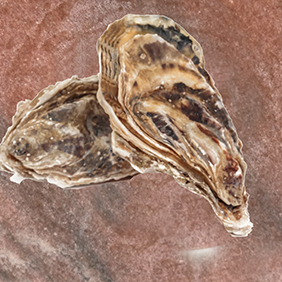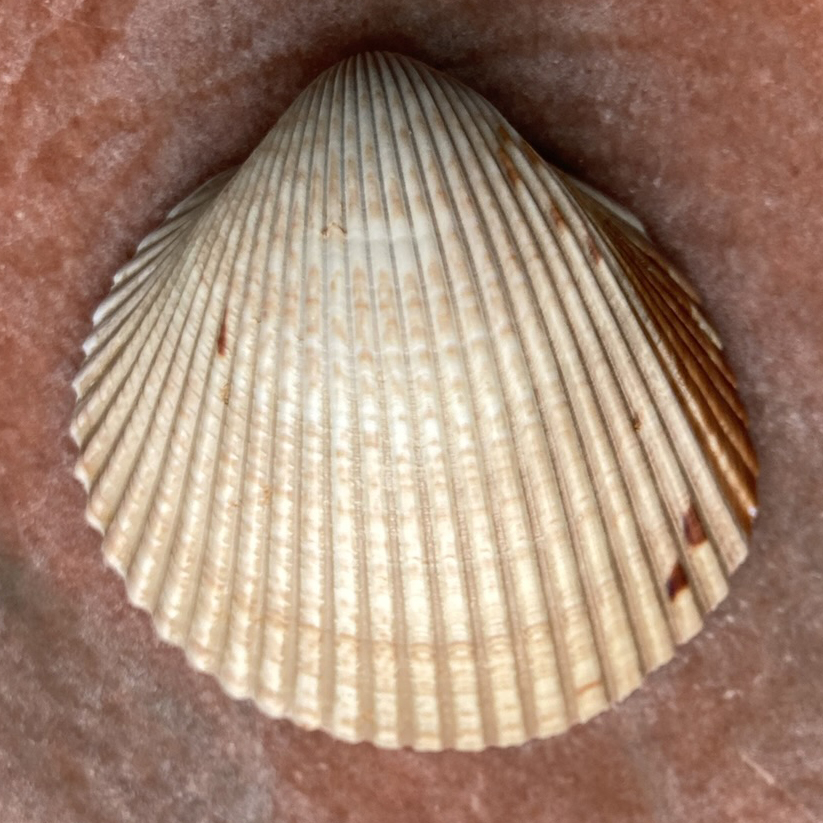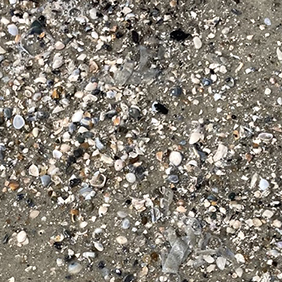What are the names of those shells you see walking on the beach? How many times have you asked yourself that question when visiting Hilton Head Island? How many times have your kids or grandkids asked you that question? Here are some of the tips to help you identify and name the shells you are most likely to find on the island.
Please understand there is not a complete guide to the sea shells of the South Carolina Coast but quick identification tips for the most common shells. To start, the sea shells you will find most often on any given day on Hilton Head are either oysters or clams. Clamshells include Surf Clams, Cockles, Arks, and Coquinas.
The first question to ask is, is it Clam Shell or an Oyster Shell? An oyster is light-colored and long and narrow. If it’s long and narrow but smaller and darker colored, it is most likely a mussel. That leaves the clams which are rounded instead of long and narrow.
First, look at the lines on the shell. Are the lines concentric or are they radial, fanning out from a center point on one side of the shell? The concentric circle lines mean that the shell is a quahog clam or a surf clam. A surf clam shell is a bit more delicate and thin when compared to a quahog. If the lines are radial, then look at the shape. Is the shape round or not so round, maybe oblong? The round shells are cockle shells. The oblong shells are ark shells. Let’s begin to review the most common sea shells.
Oysters, Mussels, Clams
Oyster shells are very common on ocean beaches. They vary in shape and color, unlike most other shells. In general. Oyster shells are long and narrow, ranging up to ten inches in length; the shells are thick and sturdy, with irregular ridges on the outside. Inside, Oyster shells are smooth and often tinged with purple. The muscle scar, where the adductor muscle attaches, is typically dark purple. Single shells are found on the beach, but the living Oyster is a bivalve (mollusk with two shells). Oysters are often located in clusters where they attach to each other; large numbers of clusters gathered in the same area make up an Oyster bed (also known as a rake).

Mussels are bivalve mollusks; the two shells of mussels are equal in size and typically fan-shaped. The Ribbed Mussel is the most common species in the Carolinas. Up to five inches in length, its shell is wide and rounded on one end, narrow and pointed at the other end. Prominent radial ribs on the outside of the shell give it its name.

The shell of the Quahog (pronounced co-hog) Clam is commonly found on Carolina beaches; the species is also known as the Hard-shelled Clam.
The Quahog shell is easily recognized; the outside is tan to whitish, with fine concentric rings. The shell feels thick, heavy, and solid. Sometimes, two clam shells are found still attached at the hinge (the live clam is a bivalve, having two symmetrical shells).
The inside of a Quahog shell has several distinct markings. A variable amount of purple color is often present on part of the outer edge. Two oval scars of the adductor muscles (which hold the clam shut) can be seen on either side. The dull, chalky white center is surrounded by a smooth and shiny surface; the outer edge has fine serrations.

Shells of the Surf Clam
The Shells of the Surf are common on Carolina beaches. Specimens south of Cape Hatteras, however, are generally smaller than in northern states. Compared to a Quahog Clam Shell, the Surf Clam is thinner-shelled, and the umbo (the bulge at the hinge) is central, not pushed to one side. The shape of the Surf Clamshell can be described as an oval triangle. These shells are often mistaken as tellins, another group of shells that they resemble. The outside of a Surf Clam shell is smooth, but line concentric growth lines are visible.
Arks, Cockles, and Coquinas
Ark shells are among the most abundant shells found on Carolina beaches. The shape of ark shells is what best distinguishes them; perhaps the best description of their shape is “an off-center clam.” One side of the clam-like shell is definitely larger.

Ark shells are further characterized by linear ribs on the outside, running from the hinge area to the periphery. Ark species range in size from one-half to four inches. Inside ark shells, the straight hinge line is marked by small teeth. Two round areas where adductor muscles attach are often visible. Ark shells live on the ocean or sound bottom in locations ranging from tidal flats to offshore depths. More than ten species of ark shells are found in Carolina waters. Teeth and rib count aid identification.
Cockle shells are among the larger and sturdier shells found on Carolina beaches; bigger specimens measure five inches in diameter. Cockles are “classic seashells” oval in shape. On the outside of the shell, there are prominent radial ribs, running from the hinge area to the edges. Cockles are equivalves, meaning both shells of the bivalve are equal. Cockle shells have proliferated on earth for at least 65 million years (man has been here the last one-half percent of this time). While more than 200 species exist worldwide, only about seven are found on Carolina beaches.

Cockle shells are famous for their mention in the nursery rhyme:
Mary, Mary, quite contrary,
How does your garden grow?
With silver bells, and cockle shells,
And pretty maids all in a row.
Then there are those teeny, tiny shells in the sand. They pop when you walk on them. They are so small a kid can pick up hundreds at one time and say, “What are these?” Happy to report that these shells are all the same and go by the name, coquina clam shells.

Coquina Clam shells are among the smallest shells found on the beach. At the same time, they are certainly among the most attractive. Coquinas are usually one-half to three-fourths inch long; they are wedge-shaped, sort of a triangle with rounded edges. Coquinas are bivalves, with two identical shells. Coquina shells are spectacular because they come in a variable rainbow spectrum of colors and patterns (thus the scientific name variabilis). The outside of the shell may be white, blue, yellow, brown, red, etc., in a solid, rayed, or ringed pattern. The intertidal zone, the area of beach between high and low tide, is the sole place Coquina Clams live. They exist in dense groups, with up to 1,500 clams in a single square foot of beach.
Looking closely at a Coquina shell, the inside edge is grooved. The outside of the shell reveals tiny radial ribs on the shorter end, which gradually fade on the longer end. The ribs fade because the longer (foot) end of the shell is constantly being dug into the sand, wearing away the grooves. Other names for Coquinas include Wedge Clams (wedge-shaped) and Butterflies (the two shells of a Coquina look like butterfly wings when spread apart). The exterior is white but usually obscured by an olive-brown layer, the periostracum. The inside of the shell has a definite “footstep” shape. The smooth, shiny lining of a Ribbed Mussel shell is a beautiful silver-white, tinged with purple and blue — quite a contrast to the dull, ribbed exterior. The hinge of the Ribbed Mussel is located on its narrow end. A single adductor muscle closes the upper end of the shell.
If you want more information, there is an app for Sea Shell Identification. Search for “Shell Museum” in the Apple App Store or click here.
This short list should get you started. Remember these shell names and the next time you are on the beach and someone picks up a shell and asks you, What kind of shell is this? You will be ready with an answer.
(Note: The material used in this blog was originally published in “Nature guide to the Carolina Coast: common birds, crabs, shells, fish, and other entities of the coastal environment“ by Peter Meyer.)




